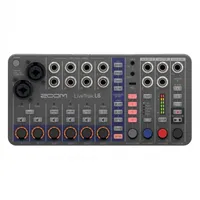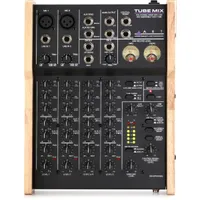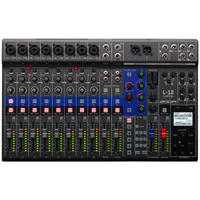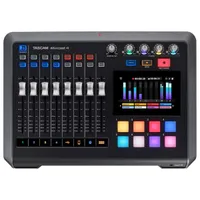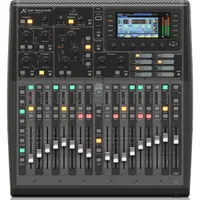Best home studio mixers 2025: analogue and digital mixing desks for all budgets
A comprehensive look at the best home studio mixers on the market today – from compact consoles to podcasting heavyweights
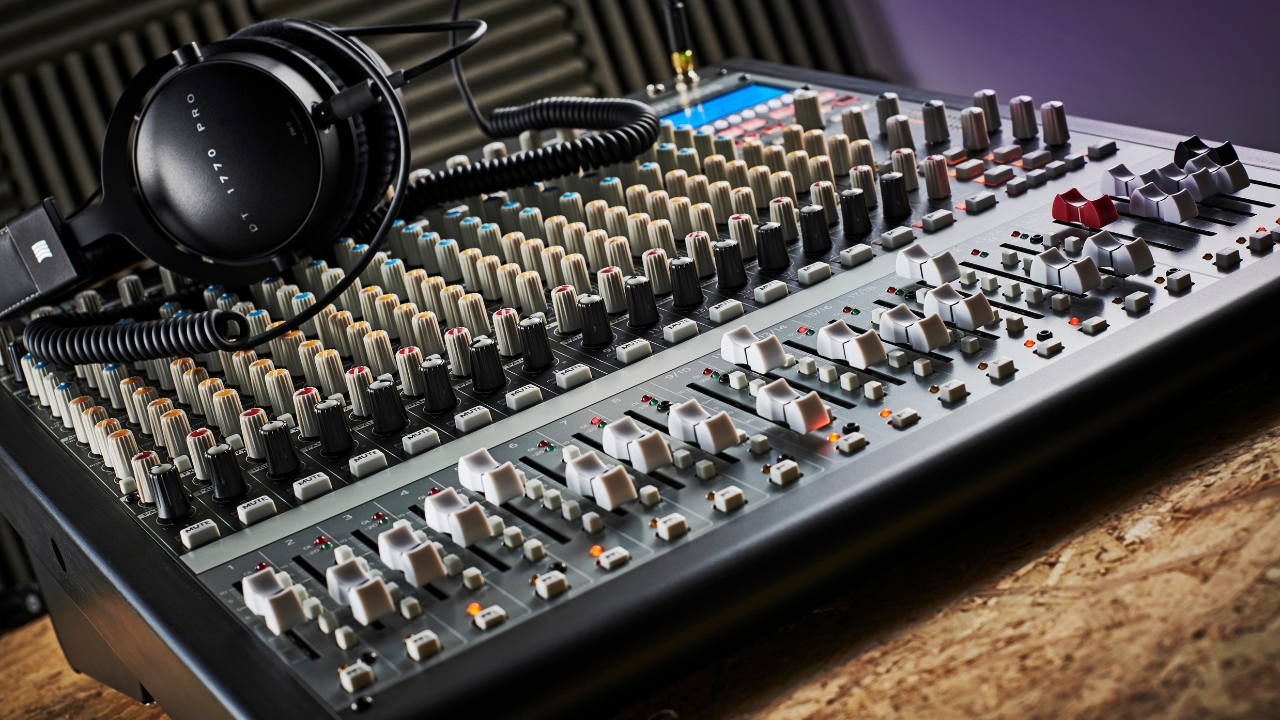
The mixing desk is more than a practical studio utility. At the risk of sounding romantic, I’m going to suggest it’s also a symbolic piece of kit, steeped in the history of hands-on audio engineering and music-making. When you put an array of EQs and faders between your instruments and your recording destination du jour, you’re stepping up from ‘recording’ to ‘producing’ – it feels amazing, and that's where the best home studio mixers come in.
Putting romanticism aside for a second, mixing desks are phenomenally valuable additions to any recording set-up. They enable you to centralise the numerous instruments and sound sources in your studio, and make meaningful adjustments to the sound and character of each before they reach your DAW. They can also be used to breathe life into your digital tracks, summing your interface outputs into a glorious, hands-on stereo mix.
Of course, while mixing desks provide an incredible degree of convenience in one sense, they aren’t altogether known for their practicality in other senses. Luckily, your home recording exploits can still benefit greatly from the addition of a home studio mixer – smaller in stature and no less feature-filled. These smaller mixers could also be a godsend for budding podcasters and broadcasters among us, providing immediate and tactile control over mic levels and other sources.
My top pick right now goes to the SSL BiG SiX – a top quality unit with 16-channel interface, excellent SSL preamps and more.
If you’ve more questions to ask before picking your next mixer, head down to my FAQ section for more info; otherwise, read on for the best home studio mixers going.
Our top picks

The BiG SiX builds on the heritage of SSL’s legendary, large-format studio consoles, but does so in a way aimed primarily at home and project studios. It offers a full 16-channel analogue mixer plus USB 24-bit/96kHz audio interface built-in.

The Tascam Model 12 is a picture-perfect home studio mixer, with neat features and connectivity options galore. It’s also an audio interface and a standalone multitrack recorder, making it ideal as a mixer for any possible use case.
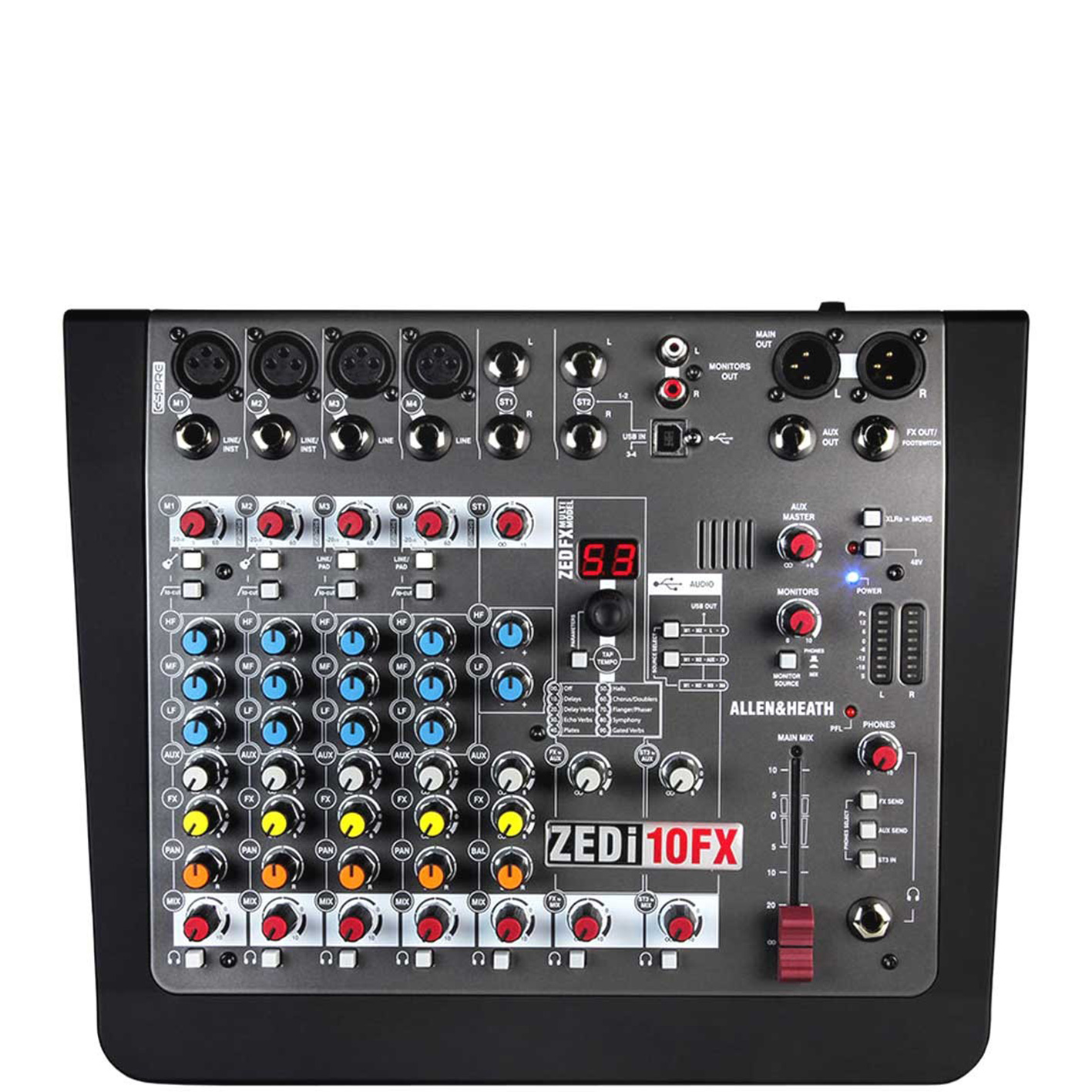
This mixer bundles a 4x4 USB interface alongside GSPre boutique preamps and onboard effects for a powerful studio-ready solution. It's well designed, well built, well equipped, and great value for money.
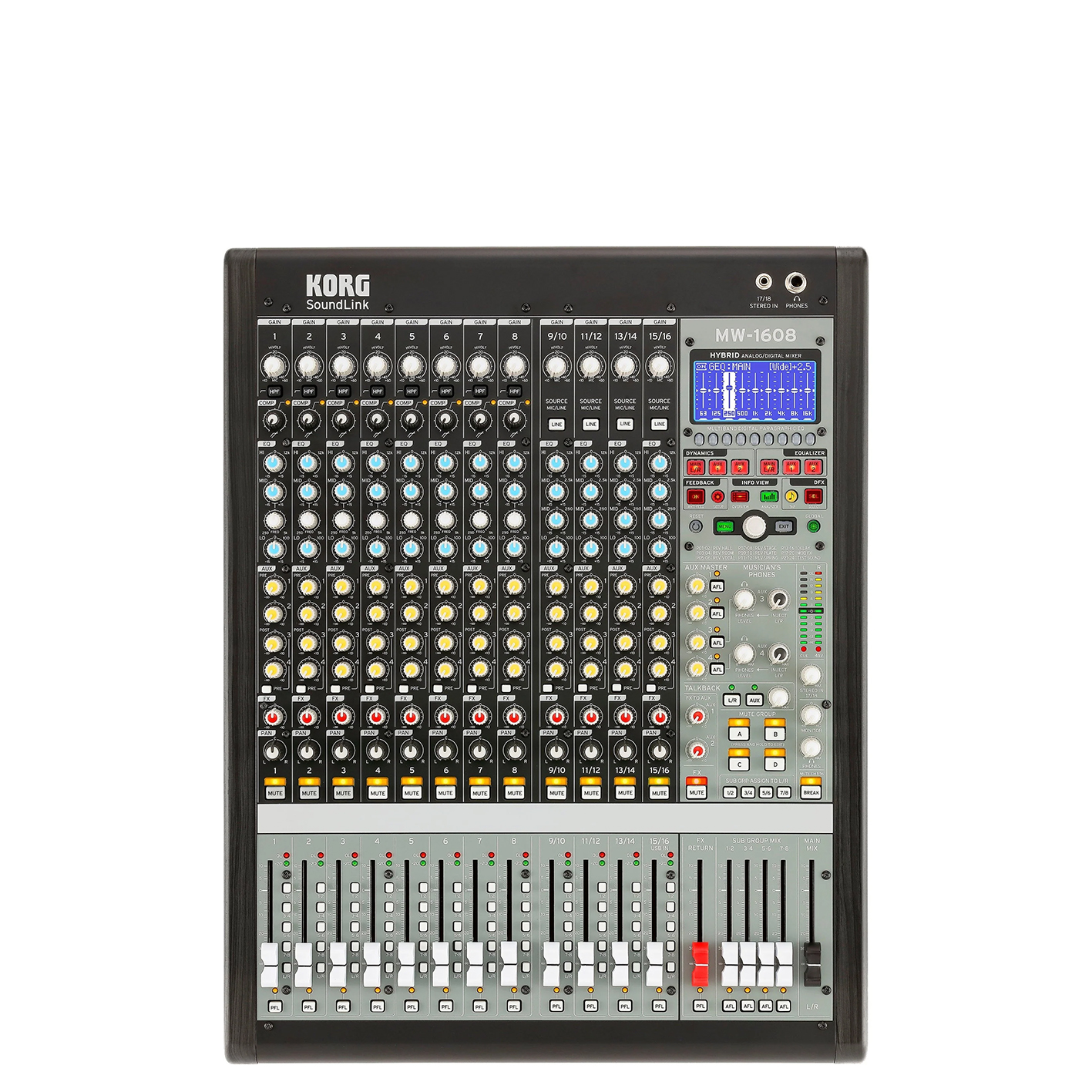
SoundLink mixers excel in band or live situations more than they do home studio ones. For those looking for a more old school, analogue workflow, who can cope without onboard recording or multi-channel streaming, these are still quality desks.
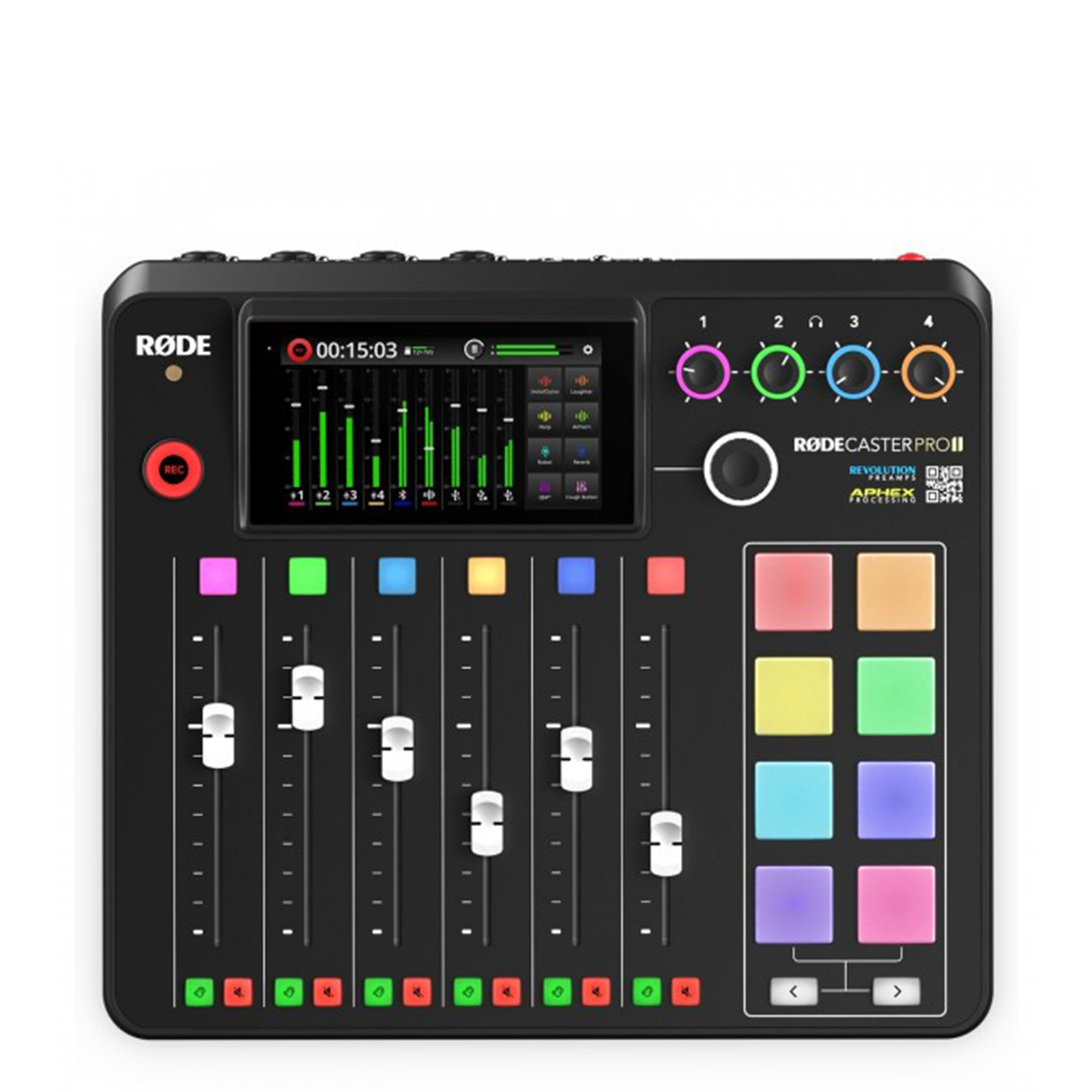
This mixer offers up enough ‘standard’ mixing capability for most but then augments that with pod-friendly additions like four headphone outputs, hot-swappable action buttons and the ability to record directly from the unit onto an SD card or external drive.
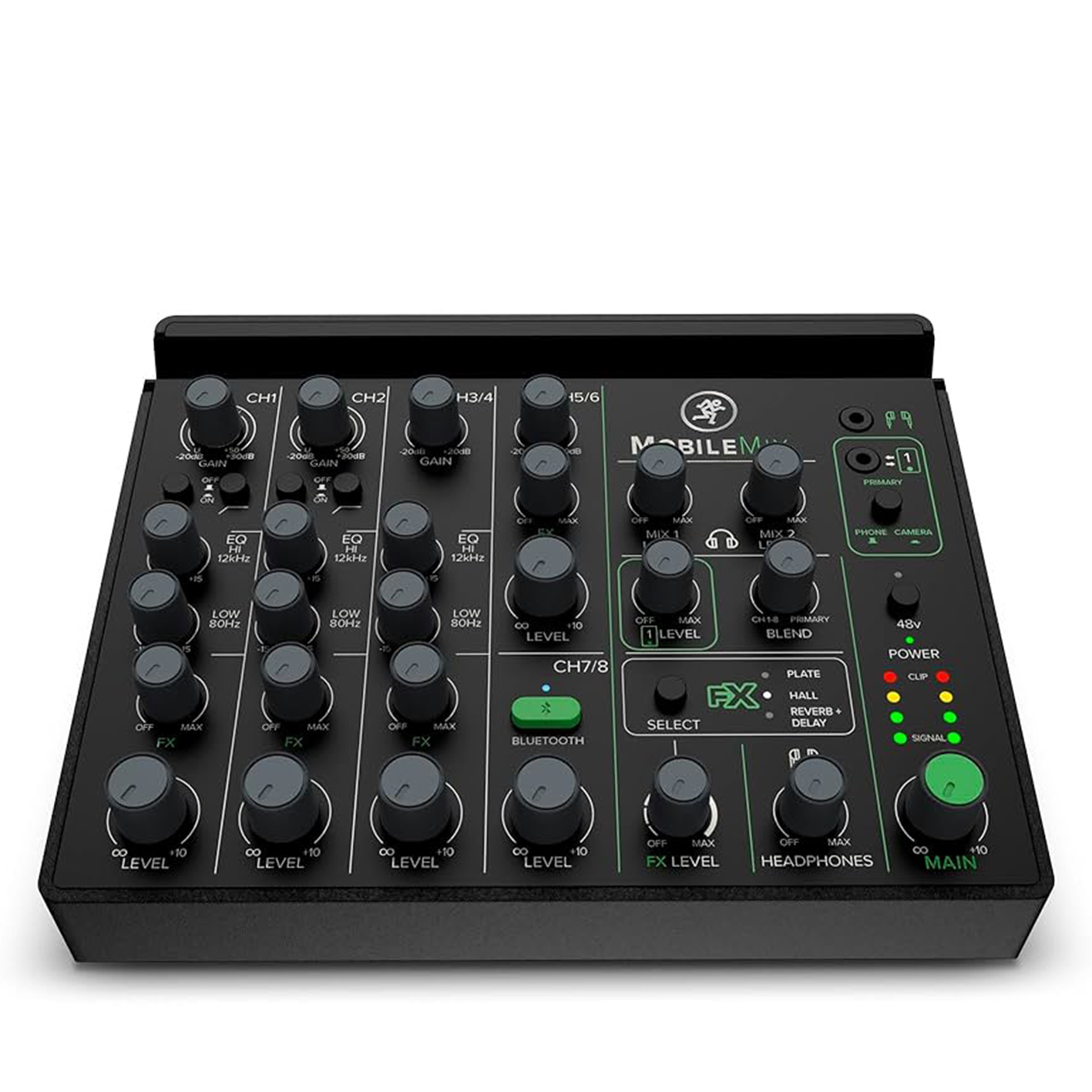
Mackie’s MobileMix 8 is a portable powerhouse of a mixer, and on of the most capable on the market for smartphone recording or streaming.
Best overall
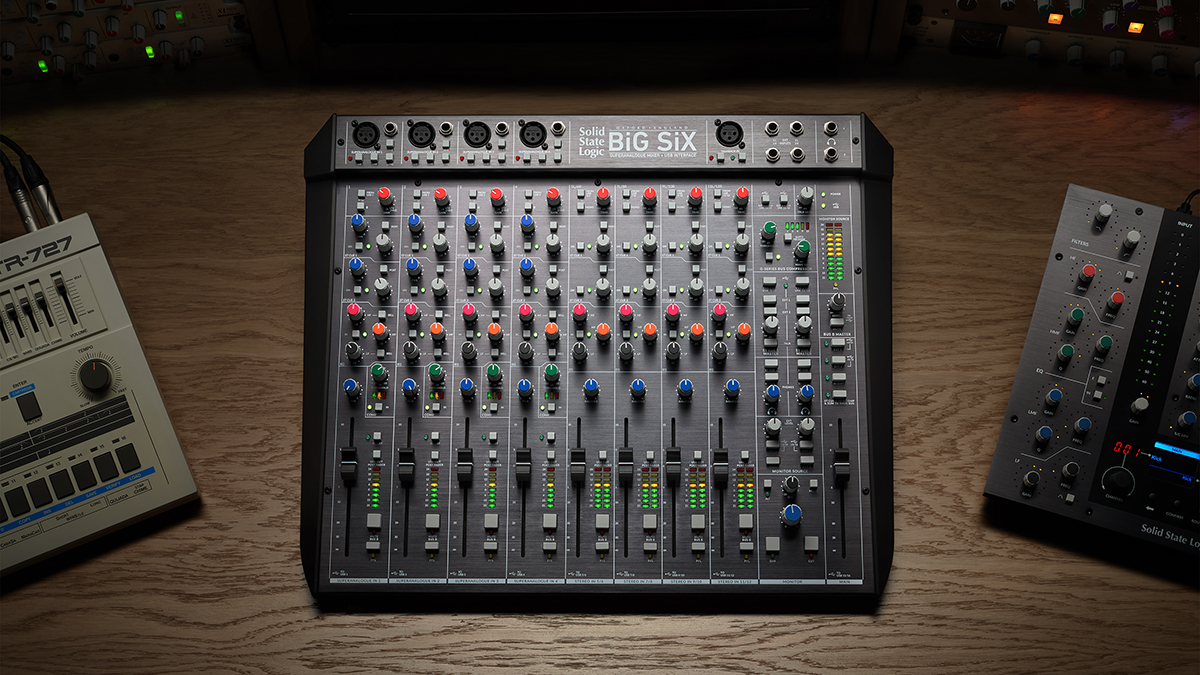
Specifications
Reasons to buy
Reasons to avoid
✅ Buy if you want a solid and flexible unit: This is a quality home studio mixer that successfully blends analogue heritage and digital convenience.
❌ Avoid if you're on a tight budget: This is an expensive bit of kit and is aimed at veterans rather than those just starting out.
Build quality: ★★★★½
Features: ★★★★★
Ease of use: ★★★★½
Overall: ★★★★½
As its name implies, BiG SiX is the larger sibling of SSL’s equally impressive SiX (see below). This model ups the ante by offering a full 16-channel analogue mixer. These include four mono channels that feature SSL’s SuperAnalogue mic preamps, each offering mic/line/Hi-Z inputs, a high-pass filter, SSL Channel Dynamics, an updated three-band EQ and a fully balanced insert point. These are joined by four stereo inputs with dual mono switching.
The analogue appeal is rounded out with three compressor flavours, one of which is an ‘Essential’ version of the classic SSL G-Comp Bus Compressor that features the well-known auto-release option. SSL compressors are a sought-after choice for their ability to ‘glue’ sound sources together and add punch to drums – and having that access to that in your home studio is a major draw here.
Crucially, BiG SiX also improves on the SiX’s biggest weak spot by adding a 16-channel USB 24-bit/96kHz audio interface. This is certainly not a cheap option, but the blend of analogue heritage and digital convenience makes this a fantastic device for small studio setups.

"Full of functionality and quality. Big SiX marries two key devices in a way that makes it hard to justify keeping them separate ever again. Worth the money."
Read more: SSL BiG SiX review
Best for home

Specifications
Reasons to buy
Reasons to avoid
✅ Buy if you want a feature-packed mixer for a great price: There's a lot to dig into with the Tascam Model 12 making it a mixer you can grow with
❌ Avoid if you're new to mixing: With so much going on under the hood, the Model 12 might be a bit too complex for beginner mixers.
Build quality: ★★★★½
Features: ★★★★★
Ease of use: ★★★★½
Overall: ★★★★½
Tascam is practically the big name in home studio recording, thanks to its iconic contributions to four-track tape recording; you’re not a bedroom pop artist if you haven’t thought about running something through a Tascam Portastudio before. Though intervening Tascam porta-recording tech has been, on occasion, forgettable, the Tascam Model 12 is anything but.
The Model 12 is a 12-track-recorder, 10-input mixer, comprehensive USB audio interface and DAW controller in one, with everything you could ever possibly want or need from any individual thing in bountiful supply. One-knob compression on every input channel, a 16-strong on-board effects module, a dedicated mini-jack input with mix-minus capability, endless options for monitoring and filtering, simultaneous onboard and DAW multitrack recording, a dedicated click track… Tascam has thought of everything.
The Tascam Model 12 is insanely full-featured for its price, and a solid contender for best-in-class accordingly. There’s a lot to get to grips with, but you can practically guarantee that your needs will be met within its bulging user manual.

"It looks like a regular compact mixer, but the Model 12 is packed with features and is one of the best units we’ve seen at this price."
Read more: Tascam Model 12 review
Best budget
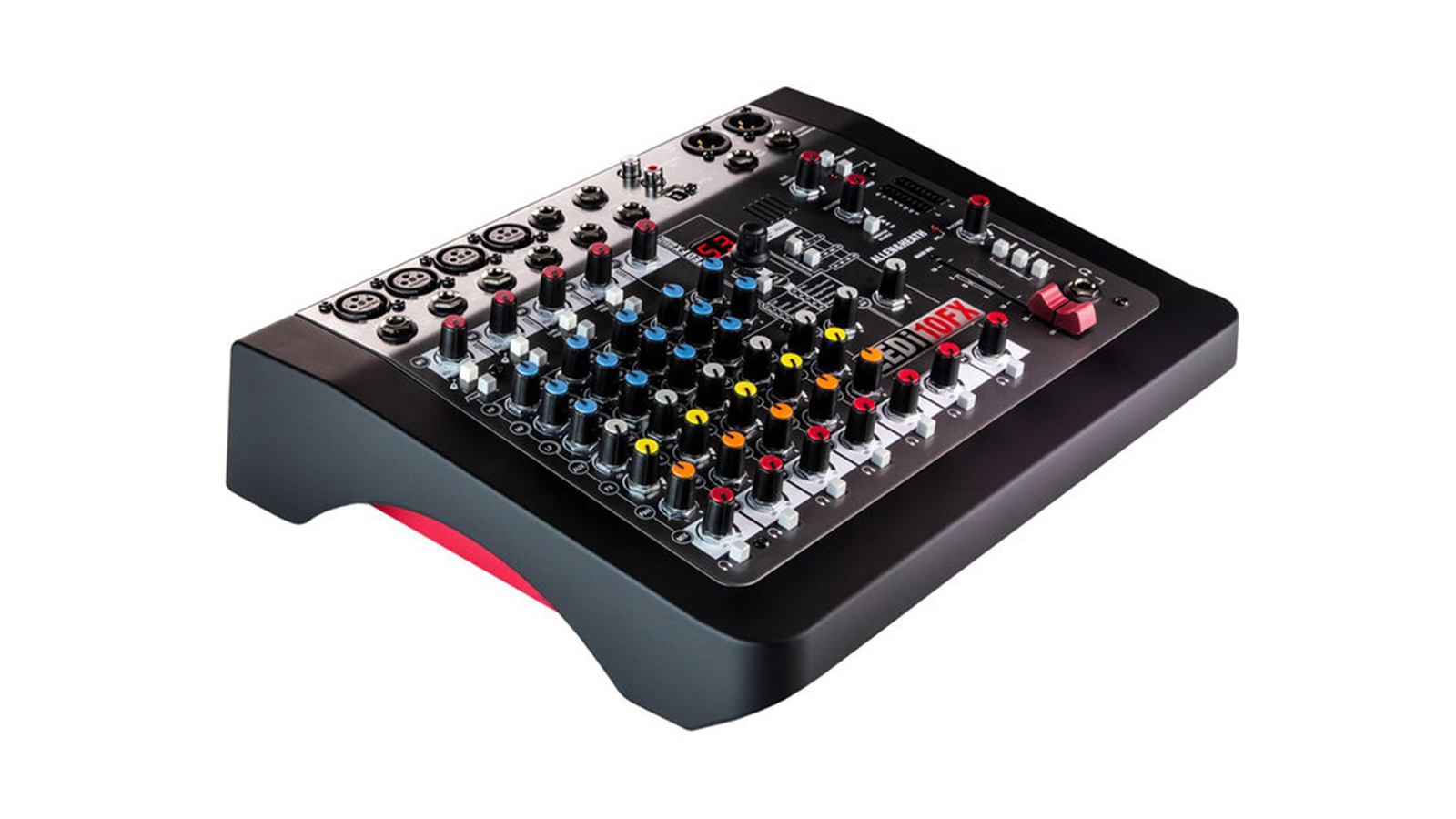
Specifications
Reasons to buy
Reasons to avoid
✅ Buy if you want an affordable and robust mixer: With plenty of features and great price and build quality, for a great price, the ZEDi 10FX is hard to beat.
❌ Avoid if mixer looks matter: For me, the older models looked better than the 10FX, but it's a minor niggle given the price and quality on offer here.
Build quality: ★★★★★
Features: ★★★★★
Ease of use: ★★★★★
Overall: ★★★★★
The latest update to A&H’s long-running analogue ZED series bundles a 4x4 USB interface alongside GSPre boutique preamps and onboard effects for a powerful studio-ready solution.
You get four mono mic/line channels (with phantom power) plus three stereo inputs. The first two channels include a high impedance DI mode, while the four mono channels feature separate balanced/unbalanced TRS and XLR inputs, with the stereo inputs on TRS jacks.
The GSPre preamps are super quiet and have bags of headroom, and all mic inputs include a 100Hz low-cut filter alongside 3-band fixed frequency EQ. USB operation is also sensible, with 3 routing configurations. Finally, an onboard FX send and processor rounds things off. The ZEDi 10FX is well designed, well built, well equipped and is great value for money.

"If you are looking for a compact and portable mixer, the ZED series are built tough, excellent value and come in a variety of formats."
Read more: Allen & Heath ZEDi 10FX review
Best for bands

Specifications
Reasons to buy
Reasons to avoid
✅ Buy if you're a band looking for a live mixer with serious chops: For multi-channel streaming and top-notch Korg effects, this is the desk to go for.
❌ Avoid if you'd prefer to have an audio interface: For all its excellent qualities, the lack of full audio interface or onboard recording are downsides.
Build quality: ★★★★½
Features: ★★★★★
Ease of use: ★★★★½
Overall: ★★★★½
Korg’s SoundLink mixer series comes with some impressive names attached to it. Any musician with an interest in mixing technology will likely recognise Greg Mackie’s name, and the fact that he and equally notable, former Trident designer Peter Watts have had input into the design here gives Korg’s latest consoles some serious pedigree.
Korg describes the SoundLink range as being ‘hybrid’ mixers, implying a balance of analogue and digital tech, although that doesn’t quite pan out how you might imagine. The analogue side is very strong here, with excellent pre-amps and classically-styled channel strips that are easy and very satisfying to use. There are plenty of strong, musician-friendly touches too, such as smart monitoring features and handy mute groups.
There’s some decent digital technology onboard too, primarily in the form of Korg’s excellent DSP effects. However, its major downside compared to some other mixers on this list is a lack of audio interface – there is a single stereo streaming channel, but this is more aimed at recording from a digital source than true studio integration.
As a result, as good as the SoundLink mixers are, they excel in band or live situations more than they do home studio ones. That said, for those looking for a more old school, analogue workflow, who can cope without onboard recording or multi-channel streaming, these are still quality desks.

"If you can live with the lack of digital I/O, this is an excellent mixer with lots of features musicians will love."
Read more: Korg SoundLink MW-1608 review
Best for podcasting
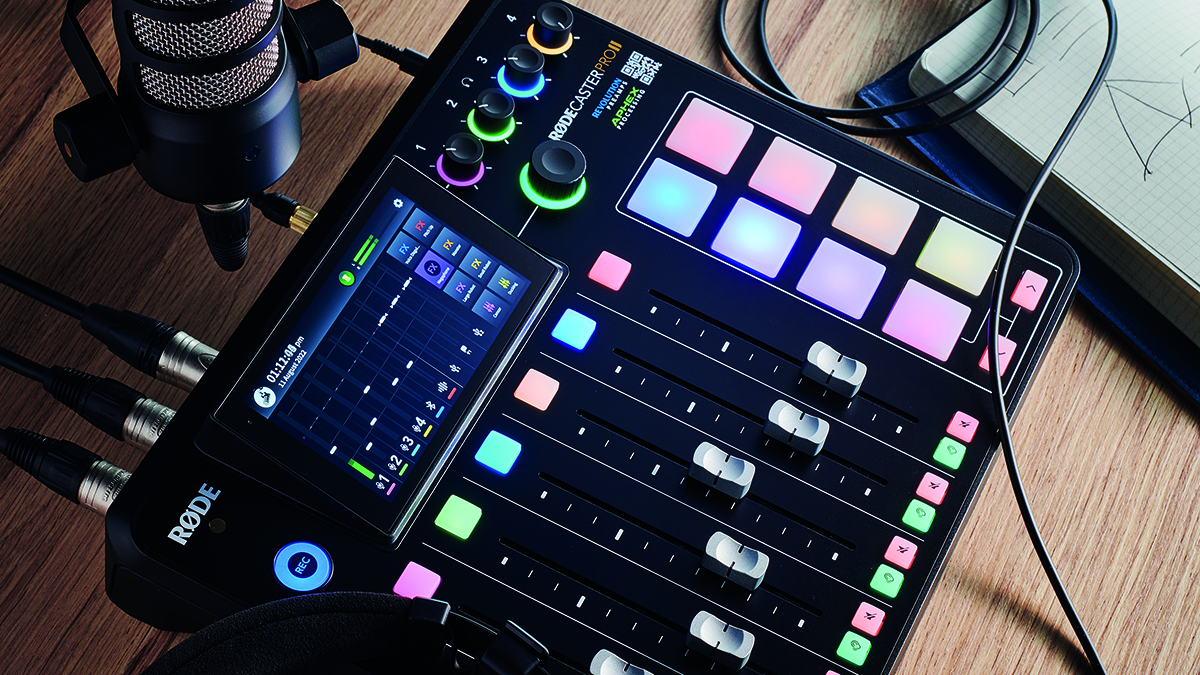
Specifications
Reasons to buy
Reasons to avoid
✅ Buy if you want a flexible mixer for podcasting: With features including 4 headphone outputs, swappable action buttons and the ability to record on to an SD card make this a neat unit for podcasters.
❌ Avoid if you're a podcaster on a budget: There's no getting away from the fact that this is a pricey mixer and non pod people would be better suited with a different mixer.
Build quality: ★★★★½
Features: ★★★★½
Ease of use: ★★★★½
Overall: ★★★★½
Podcasting is an interesting sub-genre for home studio mixers, in that there are a few features which may not make sense for musicians but will improve the quality of life for podcasters and content creators immensely.
The Rode RODECaster Pro II is a great example of this, offering up enough ‘standard’ mixing capability for most people but then augmenting that with pod-friendly additions like four headphone outputs, hot-swappable action buttons and the ability to record directly from the unit onto an SD card or external hard drive.
Four high-quality mic preamps mean your voice recordings will sound sweet, while we found the large touch screen makes adjusting levels and settings a breeze. It’s fairly expensive, and the additional bells and whistles may not be wildly useful for everyone, but if your home studio focuses on podcasting, vlogging or streaming - and your budget can stretch to it - then the Rode RODECaster Pro II is well worth your time.

"Røde gives the all-in-one podcast production centre a big upgrade, delivering a higher quality, slicker and yet smaller device."
Read more: Rode RodeCaster Pro II review
Best mobile

6. Mackie MobileMix 8
Our expert review:
Specifications
Reasons to buy
Reasons to avoid
✅ Buy if you want a mixer for live-streaming: The MobileMix 8 is one of my favourite mixers for live-streaming as it's portable and packed with neat features.
❌ Avoid if you want a bigger, fuller-functioned mixer: If you're after a home mixer for content away from streaming, there are better options available.
Build quality: ★★★★
Features: ★★★★½
Ease of use: ★★★★
Overall: ★★★★½
Mackie’s MobileMix 8 is a portable powerhouse of a mixer, and one of the most capable on the market for smartphone recording or streaming – a market which, surprisingly, is still quite underrepresented for the exponential growth of interest in smartphone filming, podcasting, and live-streaming. The MobileMix 8 is more than a token offering here, in a few distinct ways too.
The MobileMix 8 is an eight-channel mixer, with two high-impedance combi XLR/TS inputs that benefit from phantom power. The remaining channels comprise stereo line-in and Bluetooth, while the outputs include dual XLR for the main out, two headphone monitor mixes and two jack options for connecting smartphones or cameras. This jam-packed box is capable of fielding multiple devices at once, corralling audio to and from your chosen equipment with surprising ease; your multi-platform livestream dreams are made a breeze with this thing.
Sweetening the deal, you’ll find a ready-made cubby hole for a rechargeable battery pack in the rear. With this, you can take your complex podcasting or live-sessioning plans on the road with no worries as to power and its lack thereof. It’s not a perfect mobile mixer, but it’ll more than do for what it’s capable of doing.
Also consider
Soundcraft Notepad 12FX
USB-B | 12 ins | 4 outs | 24-bit, 44.1/48kHz
Soundcraft have been making entry-level mini mixers for yonks now, the Notepad series having seen its own fair share of iterations in its time. This, the Notepad 12FX, carries the torch – with USB connectivity as a 4-in, 4-out interface, as well as a 12-in mixer with built-in Lexicon effects. This is a great low-cost option for connecting up a busy studio.
★★★★
Read more: Soundcraft Notepad 12FX review
Zoom LiveTrak L6
USB-C | 10 ins | 4 outs | 24/32-bit, 48kHz
Ever seen a 10-input home studio mixer the size and shape of a chocolate bar before? Now you have, with the Zoom LiveTrak L6 – a peculiar unit that combines some strong mini-mixer functionality with some performance-orientated smarts. It’s a USB interface, a live mixer and a self-contained recorder, with MIDI, app connectivity and on-board sample pads, as well as onboard effects, aux sends and a master compressor. 32-bit recording is the bombshell that makes this miniscule mixer worth the outlay.
★★★★½
Read more: Zoom LiveTrak L6 review
Art Pro Audio Tube Mix
USB 2 | 5-ins | 4-outs | 16-bit, 44.1/48kHz
Art’s 5 channel mini mixer includes 2 mic, 2 line and 1 Hi-Z instrument input with optional amp simulator effect. The mixer’s tube credentials are via an assignable 12AX7 tube stage, which can serve either the pair of mic inputs, or the single instrument input. There are 4 mixer strips (3 mono and 1 stereo) and all include 3 band EQ, 2 auxiliary sends and pan.
★★★★½
Zoom LiveTrak L-12
USB 2 | 14-ins | 4-outs | 24-bit/96kHz
A slight detour away from traditional ‘home’ studios brings us to rehearsal spaces. This 12-input digital mixer combines the best of both worlds. As a pure mixer, you can record up to 12 sources at the same time with complete control over levels, panning, effects and routing. This can then be output either as one summary source, or as individual tracks to a computer over USB for editing and post-production.
★★★★
Tascam Mixcast 4
USB-C | 8-ins | 8-outs | 24-bit/48kHz
The latest entrant into the growing podcaster realm is Portastudio creator Tascam. Mixcast 4 is an SD-based multiple input, multiple output multitrack recorder with USB interfacing. It lets you balance and record the audio of your project as either a stereo mix or in multitrack format, then transfer this via USB to an assortment of devices.
★★★★½
Read more: Tascam Mixcast 4 review
Behringer X32 Producer
USB 2 | 16-ins | 14-outs | 24-bit 44.1/48kHz
The X32 Producer is the cheapest of Behringer’s three X32 digital mixers, but it still packs a serious spec. With 16 Midas-designed mic pres, 17 100mm motorised faders, 32 channel USB DAW I/O and onboard effects, you’re getting lots for your money and in a pretty compact footprint. What’s more, despite its potential complexity, the X32 Producer’s simple layout incorporating global physical controls for channel strip gain, dynamics, and EQ makes it easy to use.
★★★★
How to choose
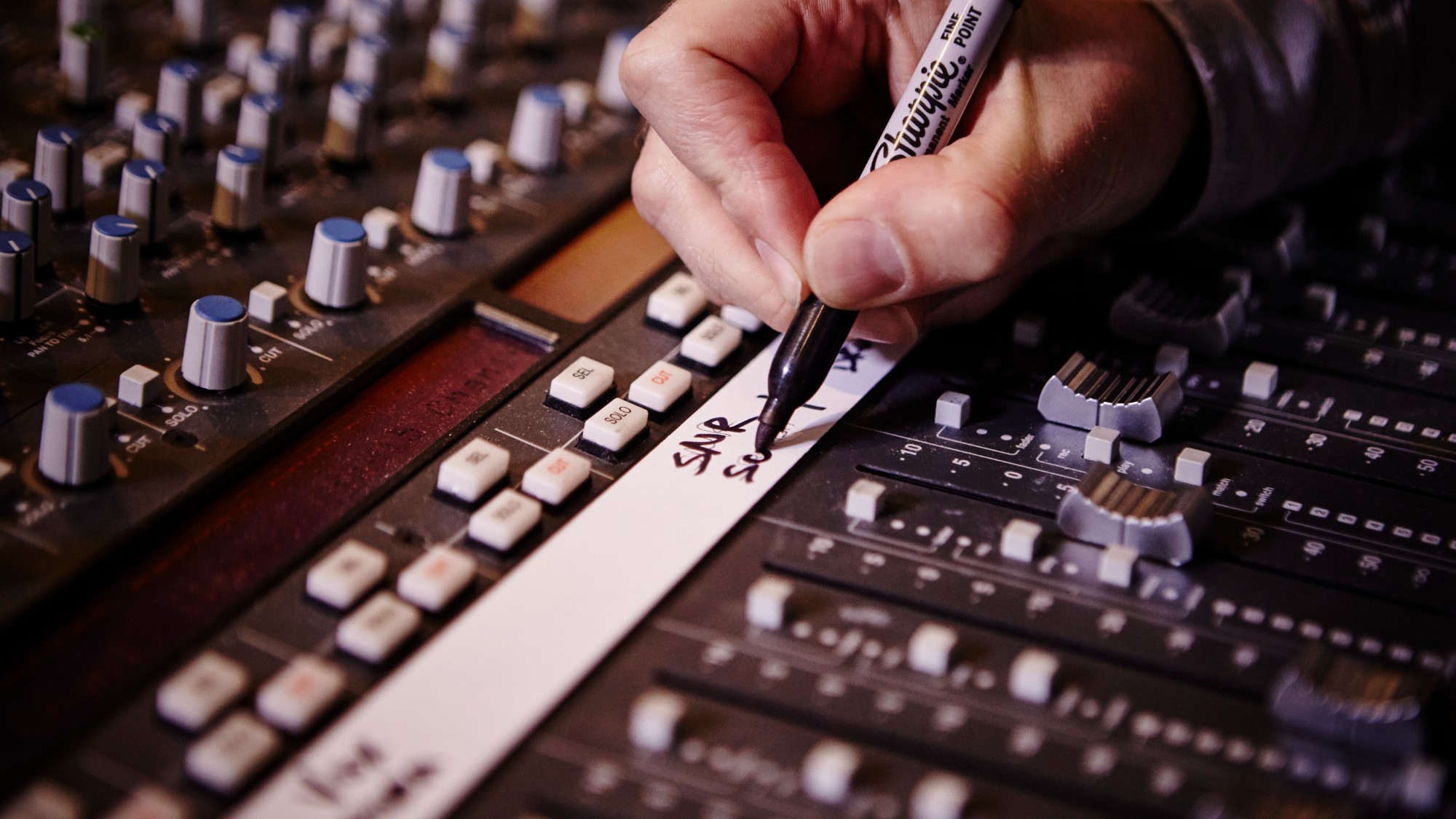
The best home studio mixer is the one that aligns most perfectly with your individual needs as a musician or recording engineer – which, as we’ve discovered already, can be difficult to properly cater for in a necessarily-broad buyer’s guide. Still, there are commonalities between mixers that you should absolutely look out for, as well as some specifics that may chime with you and your own practice.
First and foremost, audio fidelity reigns supreme. A good home studio mixer should deliver pristine sound quality, capturing every nuance of your recordings and performance. Look for models equipped with noiseless preamps, and if you’re going for a digital or mixer-interface combo, premium ADC/DAC (Analogue-Digital Conversion, and vice-versa); these will give you the best platform on which to edit your sounds later.
Versatility is another key consideration. Home studio set-ups often require flexibility to accommodate various recording scenarios and equipment configurations. Choose a mixer with at least a couple of inputs more than you currently need, for redundancy – and to ensure you can leave various sound sources connected, ready to record when inspiration hits you (and without making more work for yourself if you need to record something else!).
If you’re looking to record your band’s live performance, or print decent demos of your work straight to file or tape, you may benefit from built-in effects and signal processing. This allows you to garnish select channels with effects and compression on the way in, making for a more cohesive mix.
FAQs
Do I need a mixer for my home studio?
Whether or not you need a home studio mixer inevitably depends on your own particular needs. If you're given to recording one or two things at a time – i.e. layering instruments individually, or recording guitar and vocals via two inputs – then in all likelihood you'll be just fine just using your audio interface. But that isn’t to say you couldn’t benefit from a mixer.
If you have multiple synthesisers, guitars, drum machines and other instruments, a home studio mixer can be of immense help to your workflow, giving you ease of access to everything. Likewise, if you have hopes of multitrack recording, and of having extra control, consistency and colour in your hands in the process, then a mixer is an indispensable piece of equipment.
Do I need both audio interface and mixer?
The answer is resolutely ‘it depends’. Mixers take a wide variety of forms, from analogue summing mixers to digital hybrid affairs and even combination mixer-interfaces. If you already have an audio interface, an analogue mixer could be a great piece of character-imparting kit to insert on each input – or to sum stems from your DAW into a lovely, gluey stereo mixdown. If you don’t already have an audio interface, then you might benefit from picking a mixer that has digital connectivity built in.
Only you can know what you want this gear for, and there’s only so much I can get into here; lucky for you, though, we've got an in-depth article that goes through all the likely scenarios where you'd need a mixer, audio interface, or both.
Read more: Audio interface vs mixer
Are mixers beginner-friendly?
Large-scale studio mixing consoles are a little dense at first glance, but not hugely difficult to get to grips with if you’ve already got some studio, recording and production experience. Smaller home studio mixers are much less dense, and much easier for those of us with experience to intuit out of the box.
Even for those new to audio engineering, most home studio mixers are intuitive and user-friendly. Just give yourself a little time with the manual, and you’ll be good as gold.
Besides, there are certain features in modern mixers that rise above intuitive to straight-up foolproof. USB and Bluetooth connectivity are simple as can be, and can get you to a record-ready position in no time.
How long will a home studio mixer last?
While I would wager most mixers will remain pretty stationary once they’re set up, durability is still a fundamental consideration, particularly for equipment that sees frequent use in home studio environments.
Metal construction and high-quality materials – avoid those wobbly faders – ensure long-lasting performance, withstanding the rigours of daily use and transportation. Look for mixers from reputable manufacturers known for their commitment to build quality and reliability, providing peace of mind that your investment will endure the test of time.
How we test
Here at MusicRadar, we are experts in our field, with many years of playing, creating and product testing between us. We live and breathe everything music gear related, and we draw on this knowledge and experience of using products in live, recording and rehearsal scenarios when selecting the products for our guides.
When choosing what we believe to be the best home studio mixers available right now, we combine our hands-on experience, user reviews and testimonies and engage in lengthy discussions with our editorial colleagues to reach a consensus about the top products in any given category.
First and foremost, we are musicians, and we want other players to find the right product for them. So we take into careful consideration everything from budget to feature set, ease of use and durability to come up with a list of what we can safely say are the best home studio mixers on the market right now.
Find out more about how we test music gear and services at MusicRadar
Why you can trust us
☑️ Established 2007
☑️ 2.9 million monthly users globally
☑️ 9,500+ reviews on-site
MusicRadar has been in operation from 2007 and has been helping people on their musical journey since then. No matter if you're a producer, guitarist, drummer, keyboardist, DJ or general music enthusiast, you'll find useful information across the site, while our team of experts and industry pros regularly put instruments and gear through their paces to help you make an informed decision.
Along with our in-depth buyer's guides, MusicRadar also provides all the latest news, reviews and how-to features to provide as music information on the music world as possible.
Thanks to you, we receive three million visitors per month, making us the one-stop shop for music makers and lovers worldwide - and we also feature content from our magazine titles such as Future Music, Computer Music, and eMusician.
Meet the experts

James Grimshaw is a freelance writer and music obsessive with over a decade in music and audio writing. They’ve lent their audio-tech opinions (amongst others) to the likes of Guitar World, MusicRadar and the London Evening Standard – before which, they covered everything music and Leeds through their section-editorship of national e-magazine The State Of The Arts. When they aren’t blasting esoteric noise-rock around the house, they’re playing out with esoteric noise-rock bands in DIY venues across the country; James will evangelise to you about Tera Melos until the sun comes up.

I'm the Managing Editor of Music Technology at MusicRadar and former Editor-in-Chief of Future Music, Computer Music and Electronic Musician. I've been messing around with music tech in various forms for over two decades. I've also spent the last 10 years forgetting how to play guitar. Find me in the chillout room at raves complaining that it's past my bedtime.

Chris Corfield is the main author of our best earplugs for concerts guide and comes with a wealth of experience when it comes to writing about everything from guitar gear, synths and mics, to putting music production hardware through its paces. After 12 years covering all aspects of music, he knows how important it is to look after his hearing when testing products.

Matt has been recording bands since the mid-noughties, cutting his teeth with an M-Audio M-Track 2 and a copy of Cubase on Windows XP. Since then he's used countless audio interfaces to record music for bands across the UK, covering everything from djent to jazz. As a MusicRadar writer, Matt has reviewed 15 audio interfaces in the past year alone, and over 50 different products including guitars, amps, and pedals. Before becoming a writer, he spent five years in the music retail industry working for Dawsons Music and Northwest Guitars, providing expert advice to musicians. He’s currently studying Music Production at Spirit Studios in Manchester, UK.
Latest updates
15/05/25: The guide has been updated with four new product entries: Tascam Model 12, Mackie MobileMix 8, Soundcraft Notepad and Zoom LiveTrak L6. Each of the main products now feature "At a glance" sections and star ratings. Verdict panels have been slotted in where applicable. The FAQ section has been updated and expanded, while a section on why you can trust the MusicRadar team when it comes to purchasing a home studio mixer has also been included. We've also added a new "meet our experts" section.
Read more
MusicRadar's got your back
- Best podcast mixers: the central hub of your podcasting setup
- How to start a podcast: a beginner’s guide to podcasting
- The best budget audio interfaces: start recording for under $120/£100
- The best podcasting microphones right now
Want all the hottest music and gear news, reviews, deals, features and more, direct to your inbox? Sign up here.

James Grimshaw is a freelance writer and music obsessive with over a decade of experience in music and audio writing. He's lent his audio-tech opinions (amongst others) to the likes of Guitar World, MusicRadar and the London Evening Standard – before which, he covered everything music and Leeds through his section-editorship of national e-magazine The State Of The Arts. When he isn't blasting esoteric noise-rock around the house, he's playing out with esoteric noise-rock bands in DIY venues across the country.
- Chris Corfield
- Simon Truss
- Matt McCrackenJunior Deals Writer

